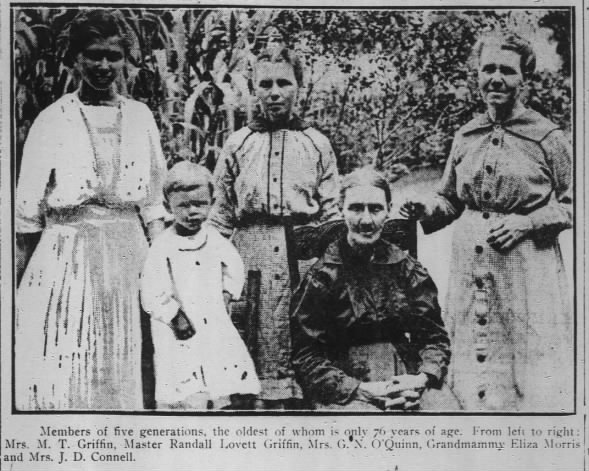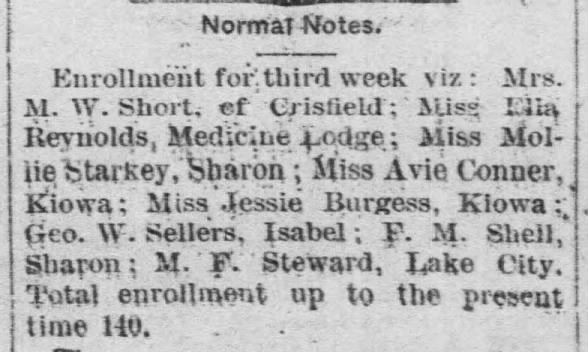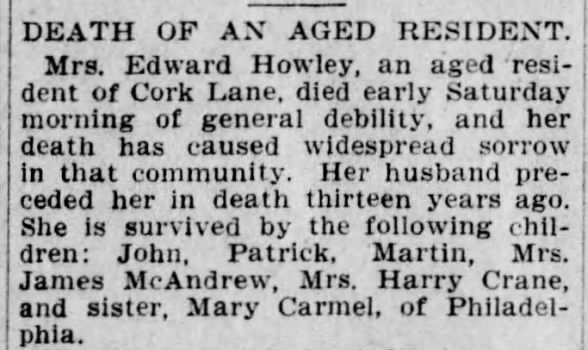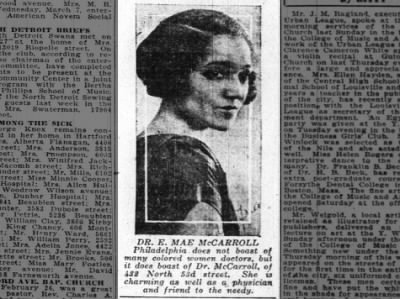Researching your female ancestors is often tricky, but historical newspapers can help you break through those frustrating brick walls. So we’re launching a 3-part series on how to do newspaper research into the women in your family tree.
Last week, we suggested 10 newspaper sections for finding information about the women in your family tree. In this second post, we’ll be sharing our top search tips for finding your female ancestor in the papers on Newspapers.com.
 Sun, Jul 4, 1915 – Page 11 · The Atlanta Constitution (Atlanta, Georgia) · Newspapers.com
Sun, Jul 4, 1915 – Page 11 · The Atlanta Constitution (Atlanta, Georgia) · Newspapers.com
Anyone who’s tried to research a female ancestor in the newspaper learns quickly that it’s often much more difficult than simply looking for the woman’s legal name. We wish it were that easy! But the way women were written about in old newspapers can prove a challenge to those of us doing family history today. Even though Newpspapers.com has amazing search and filtering capabilities, you have to search for the right keywords to turn up matches for the woman you’re looking for.
But don’t despair! We’ve got 5 top tips to increase your chances of finding your female ancestor on Newspapers.com!
1. Search for every variation of her name.
And we mean every variation. The name recorded on a census or other government record may or may not be the name used in the newspaper. And even if it was, the newspaper may have misspelled it!
Start off by searching for the woman’s legal name, but also try alternative spellings, nicknames, name abbreviations, initials, common misspellings, married name, maiden name, middle name . . . all of them. If she has a relatively uncommon last name, try searching by surname alone. And if she had a step-father, try searching with his last name as well, even if she didn’t legally adopt it.
Once you’ve found a name that returns the search results you want, it’s tempting to stop there. But don’t forget to go back and search the other variations! Your female ancestor may have been referred to in more than one way in the paper.
And be sure to keep a running list of what names you’ve searched for so you don’t repeat or forget searches!
 Mary Avaline Conner appears in a newspaper as “Avie Conner” Thu, Aug 2, 1888 – Page 3 · Medicine Lodge Cresset (Medicine Lodge, Kansas) · Newspapers.com
Mary Avaline Conner appears in a newspaper as “Avie Conner” Thu, Aug 2, 1888 – Page 3 · Medicine Lodge Cresset (Medicine Lodge, Kansas) · Newspapers.com
2. Search by her husband’s or male relatives’ names.
Because of societal expectations and traditions, married women were often written about in historical newspapers using their husband’s name (e.g., Mrs. John B. Smith) or husband’s initials (Mrs. J. B. Smith). So if the female ancestor you’re looking for was married, try searching for her husband’s name. And if she was married more than once, search for the names of all her husbands.
You should also search using the name of her father, brothers, or other close male relatives. You might find her referenced in newspaper pieces as so-and-so’s daughter, sister, or mother. Plus, looking for her father gives you the added benefit of perhaps being able to learn about your female ancestor’s childhood. Was her father in a major accident when she was a child? That would’ve shaped the life of her and her family.
 Obituary in which the woman is referred to by her husband’s name Mon, May 21, 1906 – Page 9 · The Scranton Truth (Scranton, Pennsylvania) · Newspapers.com
Obituary in which the woman is referred to by her husband’s name Mon, May 21, 1906 – Page 9 · The Scranton Truth (Scranton, Pennsylvania) · Newspapers.com
3. Research your non-direct ancestors.
When doing family history research, it can be easy to get caught up in only researching our direct ancestors. But when researching women in the newspaper, it can pay off to research people even in our non-direct (collateral) lines.
If you’re researching your great-grandmother, for example, don’t only look for her name in the paper; look for her siblings as well. Because even though her siblings aren’t your own direct ancestors, they were all closely related to your great-grandma, and information about her can turn up in articles about any of them.
4. Search by Address
At various points in the past, some newspapers included the address or street name of the person they were writing about. So if you know the address where your female ancestor was living, try a search using the address or street name, rather than a person’s name.
Even if you don’t find your own ancestor mentioned, you might find something about a neighbor that helps you learn about your own family. For example, a newspaper piece about a next-door neighbor’s party may reveal that their neighbor (your ancestor!) couldn’t make it because they were in the hospital.
Plus, it never hurts to gain a better understanding of what the neighborhood where your ancestor was living was like. You may even discover information about the family that lived in the house before or after your ancestor that sheds some light on your own relatives.
 Example of newspaper photo with address in the caption Sat, Mar 10, 1928 – Page 6 · The Pittsburgh Courier (Pittsburgh, Pennsylvania) · Newspapers.com
Example of newspaper photo with address in the caption Sat, Mar 10, 1928 – Page 6 · The Pittsburgh Courier (Pittsburgh, Pennsylvania) · Newspapers.com
5. Save your searches
Once you’ve found a search on Newspapers.com that returns results about your female ancestor, hit the “Save/Notify” button. Not only will this save the search so you can come back to it later, but it will also automatically notify you whenever Newspapers.com adds newspaper content that has matches for your search.
READ MORE: Learn how to save your search
Even if you can’t find a search that returns matches for the person you’re looking for, you’ll still want to save the search. This way, you’ll be notified if content is ever added to our site that does have a match.
If you prefer to check back on a search yourself, rather than being automatically notified, be sure to sort your search results by “Date Added.” By doing this, you’ll see new matches first, rather than older ones you may have already looked at.
We hope these tips give you some new ways to find information about your relatives! Come back next week to learn some common terms you might come across when doing newspaper research into your female ancestors.
Got any search tips of your own? Share them with us in the comments!
Get started searching for your ancestors on Newspapers.com! And follow us on Facebook, Twitter, and Instagram for more historical content like this!
Like This Post? Try One of These!

